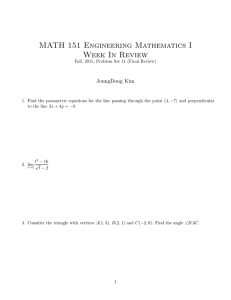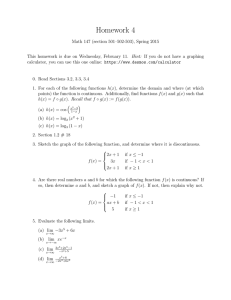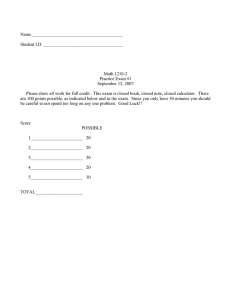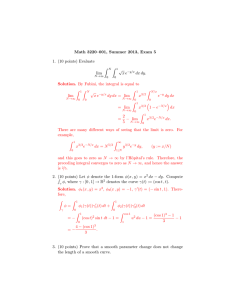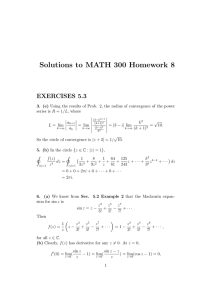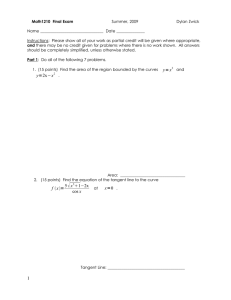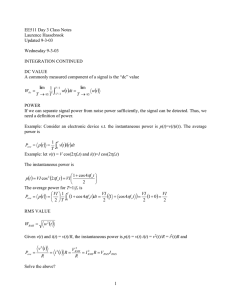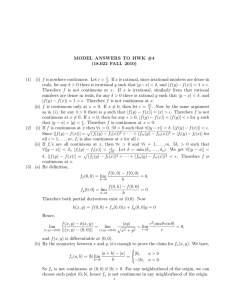ASSIGNMENT 14 for SECTION 001
advertisement
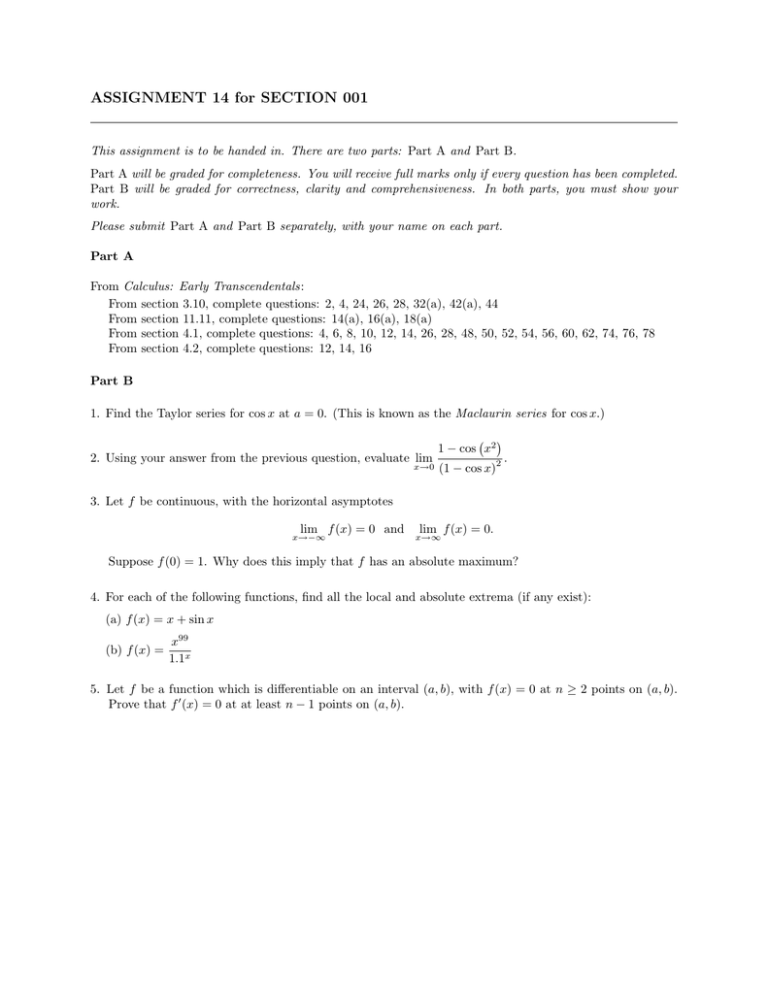
ASSIGNMENT 14 for SECTION 001 This assignment is to be handed in. There are two parts: Part A and Part B. Part A will be graded for completeness. You will receive full marks only if every question has been completed. Part B will be graded for correctness, clarity and comprehensiveness. In both parts, you must show your work. Please submit Part A and Part B separately, with your name on each part. Part A From Calculus: Early Transcendentals: From section 3.10, complete questions: 2, 4, 24, 26, 28, 32(a), 42(a), 44 From section 11.11, complete questions: 14(a), 16(a), 18(a) From section 4.1, complete questions: 4, 6, 8, 10, 12, 14, 26, 28, 48, 50, 52, 54, 56, 60, 62, 74, 76, 78 From section 4.2, complete questions: 12, 14, 16 Part B 1. Find the Taylor series for cos x at a = 0. (This is known as the Maclaurin series for cos x.) 2. Using your answer from the previous question, evaluate lim x→0 1 − cos x2 (1 − cos x) 2 . 3. Let f be continuous, with the horizontal asymptotes lim f (x) = 0 and x→−∞ lim f (x) = 0. x→∞ Suppose f (0) = 1. Why does this imply that f has an absolute maximum? 4. For each of the following functions, find all the local and absolute extrema (if any exist): 4. (a) f (x) = x + sin x 4. (b) f (x) = x99 1.1x 5. Let f be a function which is differentiable on an interval (a, b), with f (x) = 0 at n ≥ 2 points on (a, b). Prove that f 0 (x) = 0 at at least n − 1 points on (a, b).



